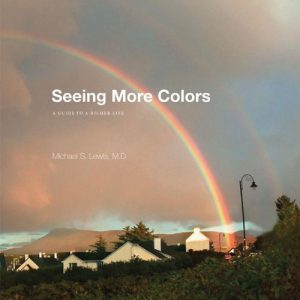Everybody Can Be Great: Service to Others and the Himalayan Cataract Project
An early chapter in my book Seeing More Colors: A Guide to a Richer Life deals with the theme of focusing beyond oneself, a theme familiar to today’s students who aspire to build a strong high school or college resume and are told to build a list of community service activities to impress admissions committees. While many students might view this “requirement” in the same vein as SAT preparation or essay writing, there are a number who are surprised and delighted by the connection they forge with the people they serve, and they come away with a lifelong intention to help others, whether through occupational choice or charitable work. In this sense, admissions expectations are a gift. Here’s why.
 Abraham Maslow, professor of psychology and my source of inspiration for Seeing More Colors, observed that all “self-actualized” people—those role models whom we most admire—have a mission in life which focuses on problems outside of themselves. Feeling blessed with an abundance of personal gifts, they are generous toward others and desire to create an environment in which others can thrive. This includes finding a vocation that gives one the opportunity to make the world a better place. It is important to remember that each of us has a certain skill set with which we can make a unique contribution.
Abraham Maslow, professor of psychology and my source of inspiration for Seeing More Colors, observed that all “self-actualized” people—those role models whom we most admire—have a mission in life which focuses on problems outside of themselves. Feeling blessed with an abundance of personal gifts, they are generous toward others and desire to create an environment in which others can thrive. This includes finding a vocation that gives one the opportunity to make the world a better place. It is important to remember that each of us has a certain skill set with which we can make a unique contribution.
Self-actualized people know that one’ life is a gift to be shared. They devote themselves to making the world better for others. Geoffrey Tabin’s work exemplifies this principle. Dr. Tabin is co-founder, along with Dr. Sanduk Ruit from Nepal, of the Himalayan Cataract Project, an organization with the goal of eradicating preventable blindness worldwide. He not only performs surgery, but also teaches local doctors and nurses cataract surgery techniques. Together they have returned sight to more than five hundred thousand people. I was most fortunate to accompany Dr. Tabin to Ghana in 2007. During that two-week visit, he and his team performed more than four hundred cataract surgeries. People from remote areas, with little or no access to health care, underwent surgery, then were fed and housed overnight before being re-examined the next morning, all for no charge to them. People who had been blind or who had had minimal vision were able to walk away unaided, excited at the prospect of seeing their children and grandchildren—sometimes for the first time.
 The literature of positive psychology presents several studies that show that helping others increases one’s likelihood of leading a more satisfying life. It’s a win-win situation. The more one gives, the more one receives. With this in mind, I donate the profits from the sale of my books, Seeing More Colors: A Guide to a Richer Life, One World: A View of Seven Continents, and Eagle Eyes, to the Himalayan Cataract Project.
The literature of positive psychology presents several studies that show that helping others increases one’s likelihood of leading a more satisfying life. It’s a win-win situation. The more one gives, the more one receives. With this in mind, I donate the profits from the sale of my books, Seeing More Colors: A Guide to a Richer Life, One World: A View of Seven Continents, and Eagle Eyes, to the Himalayan Cataract Project.
As Martin Luther King, Jr. often preached, “Everybody can be great, because anybody can serve. You only need a heart full of grace, a soul generated by love.”